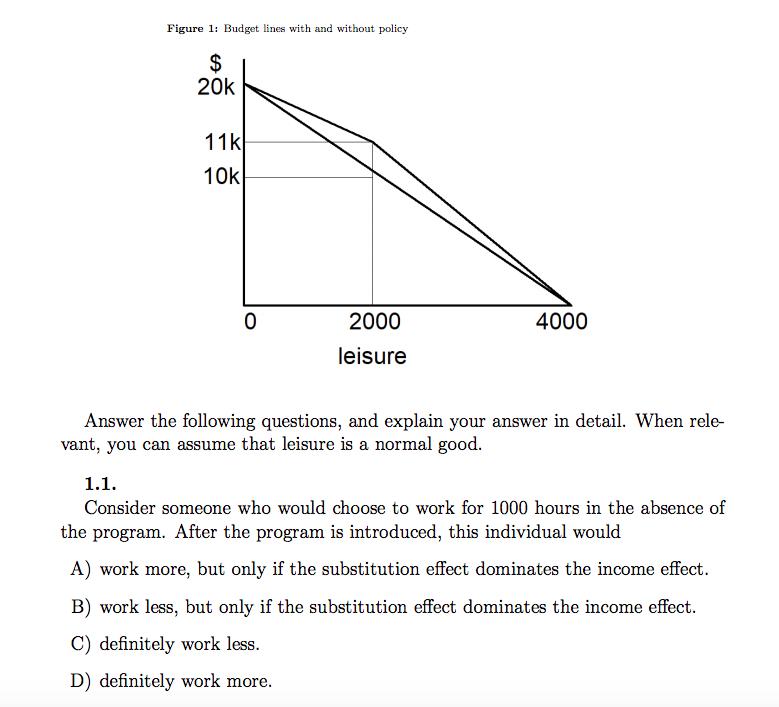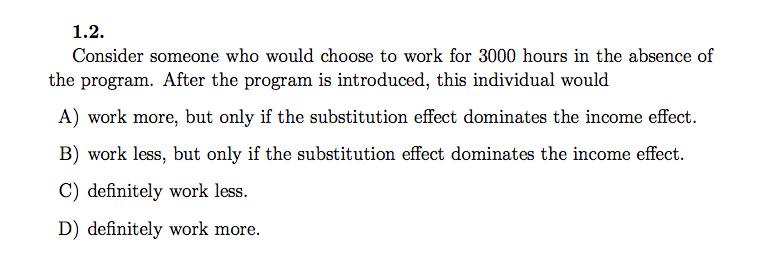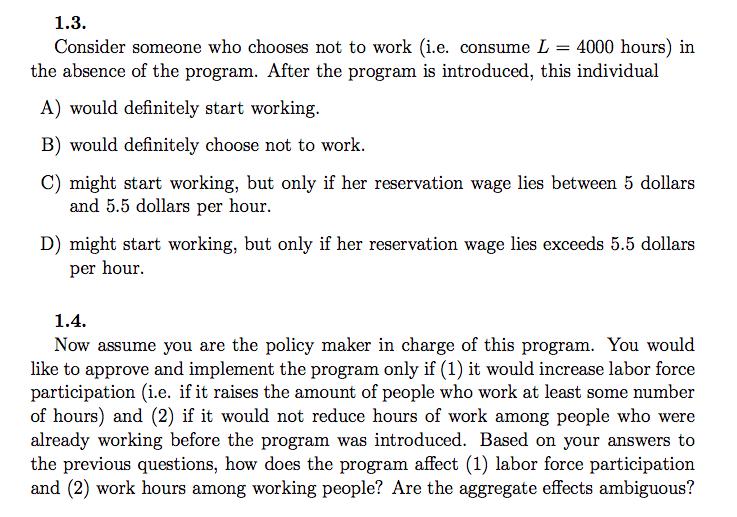Answered step by step
Verified Expert Solution
Question
1 Approved Answer
Problem 1 Consider Figure 1, which shows the budget lines for a worker who can work at most 4000 hours per year, at a




Problem 1 Consider Figure 1, which shows the budget lines for a worker who can work at most 4000 hours per year, at a wage rate of 5 dollars per hour. The lower budget line corresponds to the situation without any policy intervention. The upper budget line shows how the feasible set shifts due to a government program. Figure 1: Budget lines with and without policy $ 20k 11k 10k 0 2000 leisure 4000 Answer the following questions, and explain your answer in detail. When rele- vant, you can assume that leisure is a normal good. 1.1. Consider someone who would choose to work for 1000 hours in the absence of the program. After the program is introduced, this individual would A) work more, but only if the substitution effect dominates the income effect. B) work less, but only if the substitution effect dominates the income effect. C) definitely work less. D) definitely work more. 1.2. Consider someone who would choose to work for 3000 hours in the absence of the program. After the program is introduced, this individual would A) work more, but only if the substitution effect dominates the income effect. B) work less, but only if the substitution effect dominates the income effect. C) definitely work less. D) definitely work more. 1.3. = 4000 hours) in Consider someone who chooses not to work (i.e. consume L the absence of the program. After the program is introduced, this individual A) would definitely start working. B) would definitely choose not to work. C) might start working, but only if her reservation wage lies between 5 dollars and 5.5 dollars per hour. D) might start working, but only if her reservation wage lies exceeds 5.5 dollars per hour. 1.4. Now assume you are the policy maker in charge of this program. You would like to approve and implement the program only if (1) it would increase labor force participation (i.e. if it raises the amount of people who work at least some number of hours) and (2) if it would not reduce hours of work among people who were already working before the program was introduced. Based on your answers to the previous questions, how does the program affect (1) labor force participation and (2) work hours among working people? Are the aggregate effects ambiguous?
Step by Step Solution
★★★★★
3.37 Rating (156 Votes )
There are 3 Steps involved in it
Step: 1

Get Instant Access to Expert-Tailored Solutions
See step-by-step solutions with expert insights and AI powered tools for academic success
Step: 2

Step: 3

Ace Your Homework with AI
Get the answers you need in no time with our AI-driven, step-by-step assistance
Get Started


